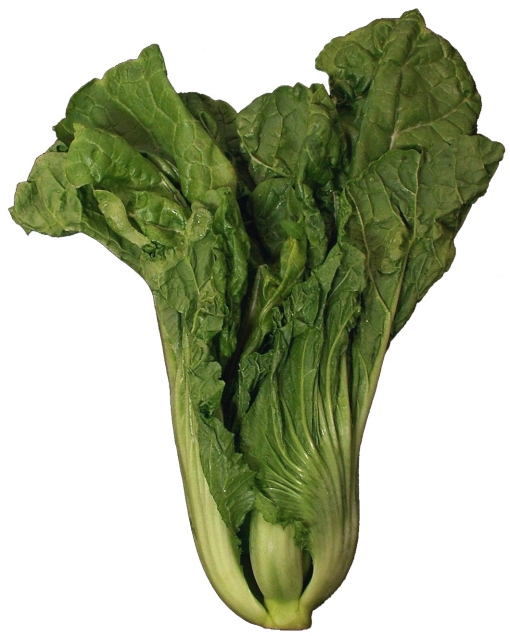
Gai choy (Brassica juncea)

Also known as
Chinese mustard, Swatow mustard greens, Mustard cabbage, Indian mustard.
General information
Gai choy is one member of the diverse mustard family. Mustards are thought to have originated around the Central Himalayas, but are now grown in all parts of Asia. They were originally used for their seeds, which could be used as a spice or pressed to extract oil, and many varieties are still grown for this purpose.
Gai choy is extremely variable in appearance - the leaves can be more or less crinkled, the thick ribs and veins more or less prominent, and colour ranges from bright to dark green. A purple leafed variety is often sold for use in home gardens and is quite ornamental.
Gai choy prefers warm, humid conditions and can grow extremely vigorously. There is interest in using seed producing varieties of Brassica juncea to make biodiesel. Gai choy can also be grown as a green manure crop, as a soil fumigation treatment or even to help remove heavy metals from soil (although these plants are obviously not suitable for human consumption).
Cooking tips
The flavour of gai choy is something many people will either love or hate! Large, mature gai choys can be extremely peppery. Mature gai choy needs to be cooked before eating, otherwise it is a bit indigestible. However, baby gai choy can be eaten fresh and is a delicious way to spice up a salad, giving it a hot, mustardy bite. Varieties with thick and fleshy leaf ribs are often preserved by pickling with garlic and chilli. Leafier types can be used in stir fries, stews and soups, especially if combined with other strongly flavoured ingredients such as tamarind paste or oyster sauce.

